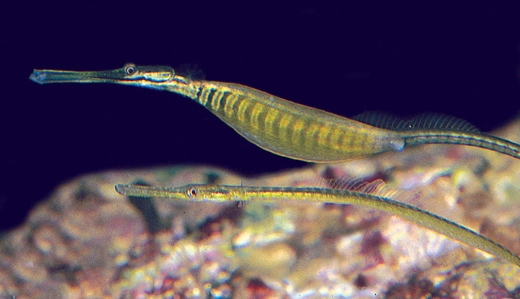General Description
Body and snout very long, slender; tail almost prehensile; tail fin absent. Colour highly variable, from greenish to brownish depending on habitat; females often with an orange line along the side. Closely resembles the Spotted Pipefish Stigmatopora argus, differing in coloration, the placement of the dorsal fin, and female body shape.
Biology
During the breeding season, females develop a swollen trunk and males have a small pouch on the underside of the tail. Individuals are extremely well-camouflaged and closely resemble the seagrass Zostera.
Habitat
Sheltered seagrass and macroalgal beds, from intertidal depths to 35 m.
Reefs
Seagrass meadows
Distribution guide
New Zealand and southern Australia.
Species Group
Fishes › Seahorses, pipefish and allies
Depth
Shore (0-1 m)
Shallow (1-30 m)
Water Column
Max Size
16 cm
Commercial Species
No
Global Dispersal
Recorded in Australia
Identify
Conservation Status
- DSE Advisory List : Not listed
- EPBC Act 1999 : Not listed
- IUCN Red List : Not listed
- Fisheries Act 1995 : Protected Aquatic Biota





